
by Matt Slem, Rice Sommelier and Culinary Scientist at Lundberg Family Farms
Quin-what?
Okay, everyone, let’s say this together. KEENwah, not QuinNOAH or ChinNOAH. Keen, like you are keen to try this delicious and nutritious grain. Wah, like “Wah, this is so good” (in the voice of Alexis from Schitt’s Creek).
Now that we’ve gotten that out of the way, let’s clarify what quinoa is and isn’t. Quinoa technically isn’t a grain; it’s a pseudo-cereal, which means it’s basically a seed that cooks like a grain. Lundberg quinoa is certified organic and grown domestically on the West Coast. This is pretty unique since most quinoa is grown in Peru and Bolivia. Lundberg Family Farms was actually the first to grow domestic, organic quinoa. We’ve figured out how to grow it in Washington, Oregon, and California to help reduce food miles. Pretty cool, right?
There are some other reasons why quinoa is pretty cool. For one, it counts as a whole grain and contains all nine amino acids that we can’t produce as humans, making it a superfood. Quinoa also contains 21-25% of our daily recommended amount of fiber and 10% of our daily recommended protein intake. Allergic to or cutting out gluten? Quinoa is also a naturally gluten-free grain and ours is also certified gluten-free!
Tips & Tricks for Cooking Quinoa
Of course, our quinoa package has quinoa cooking instructions, including the water ratio for quinoa. But there’s more to cooking this superfood than the quinoa water ratio. Plain grains are totally fine, but here are some tips and tricks we’ve found to make quinoa even more delicious!
Rinse Step
I like to rinse quinoa under cold, running water for at least two minutes, or until the water runs relatively clear. Rinsing quinoa before cooking it removes some of the bitterness from saponins, quinoa’s natural defense against insects. This bitterness is quite important in the fields, but it should be removed as much as possible before cooking.
Aromatics
Some of my favorite ingredients to use with quinoa are diced garlic, onion, ginger, or any aromatic vegetable. The type of aromatic you use will really depend on the flavor profile you’d like for your quinoa recipe. For example, adding a finely sliced serrano or jalapeno pepper to your quinoa will provide great flavor and a kick of heat. Whichever aromatic you choose, make sure you add it to the quinoa at the beginning of the cooking process.
Broth
To boost the flavor of any quinoa dish, try cooking it with broth or stock instead of water. One thing to watch is the sodium level. I recommend using low-sodium broth or stock since you can always add salt at the end of the cooking process, but you can’t fix an over-salted dish.
Fats/Oils
Use two tablespoons of fat or oil to add richness to cooked quinoa. Any fat or oil will work here. Extra virgin olive oil pairs well with quinoa and, if you aren’t vegan, using schmaltz or your butter of choice makes quinoa extra delicious. Basically, adding fat or oil helps to add a savory, decadent touch.
Seasoning
Dried herbs can hold up to the cooking process better than fresh, so add your favorite dried herbs and spices at the beginning of the cooking process or fresh herbs like basil at the end of the cooking process. I tend to stay away from earthy herbs like thyme, which enhance the earthiness of the quinoa. Instead, I stick to fresh, bright herbs like parsley, cilantro, or basil. Sometimes, I even add some citrus zest right before serving.
Variety is the Spice of Life
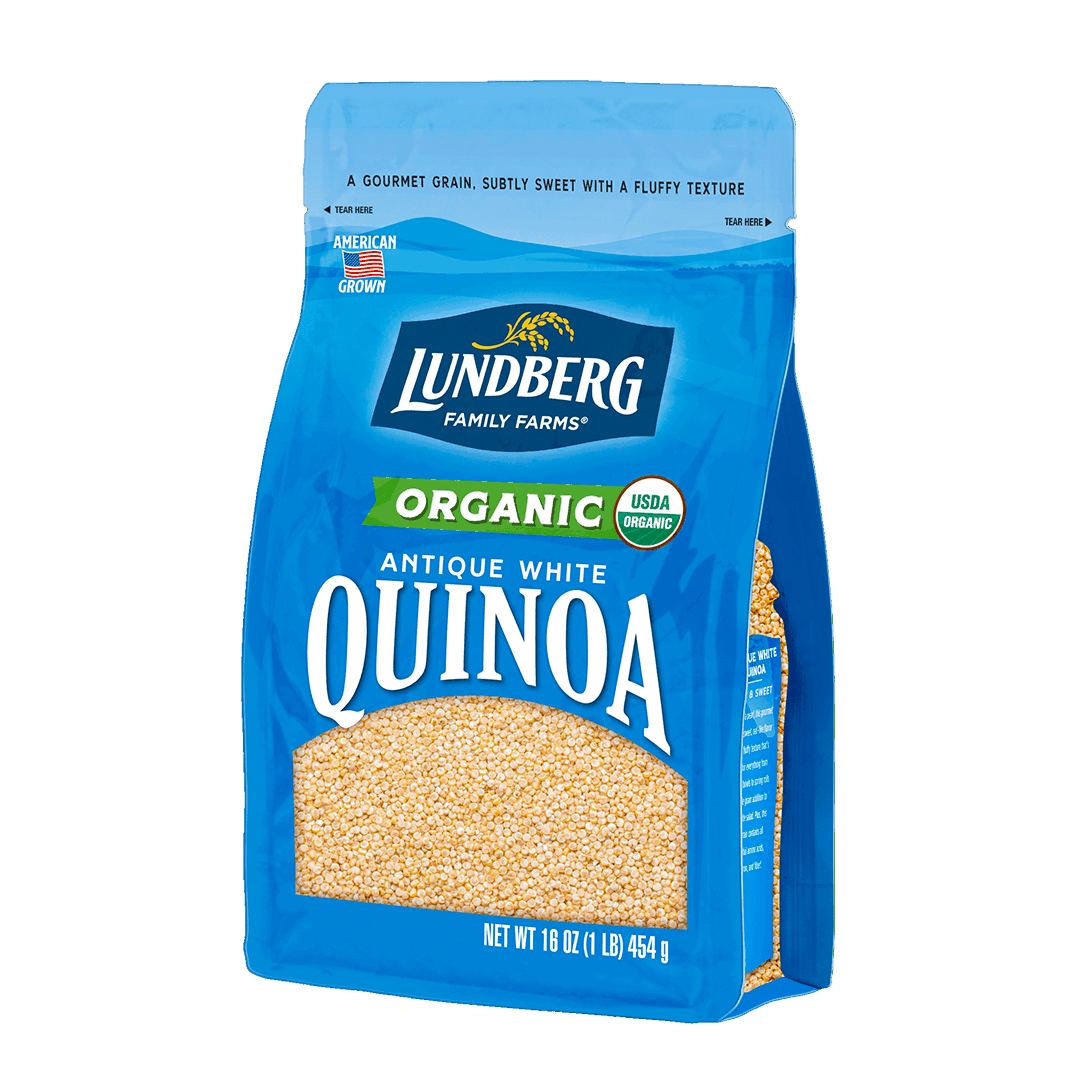
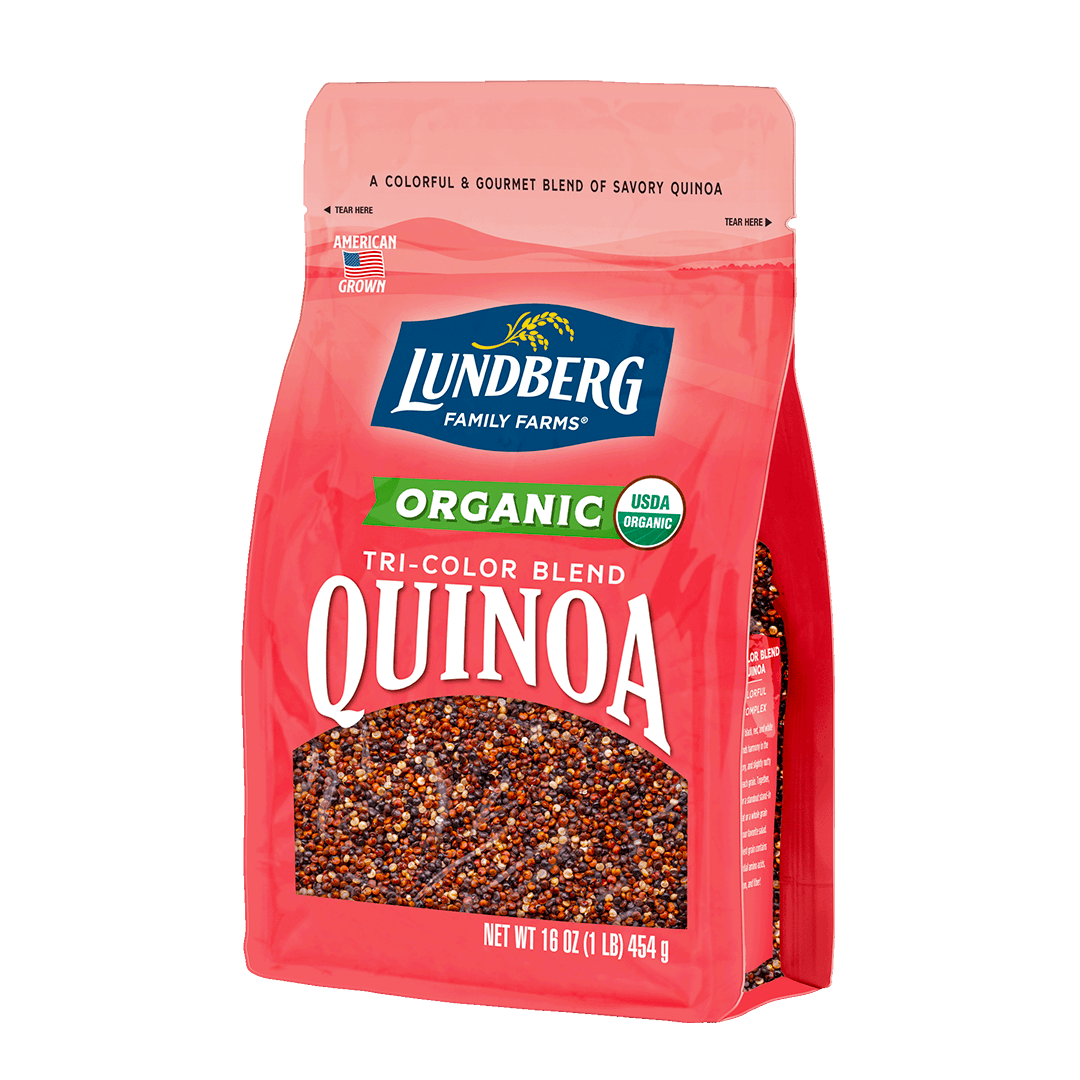
We offer two varieties of quinoa in one-pound bags: Antique White and Tri-Color Blend.
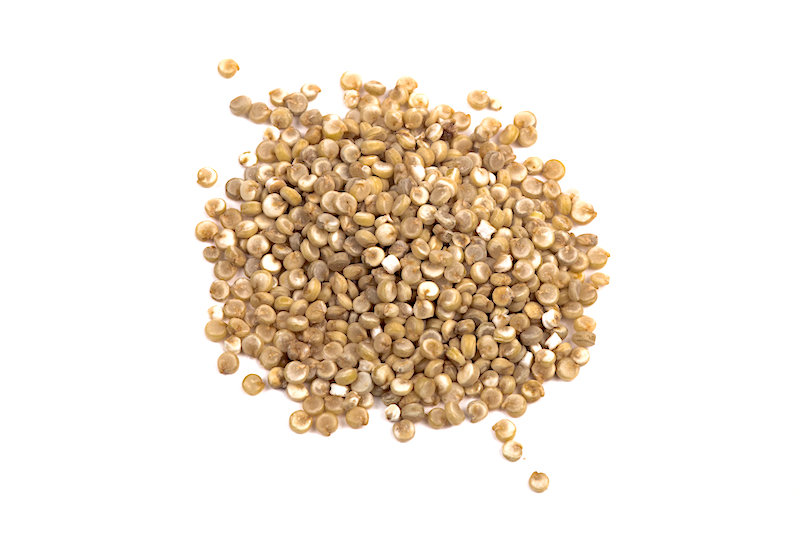
Antique White Quinoa is a white variety of quinoa that cooks in 15 minutes. It’s off-white, plump, and the softest texture of all of our quinoa varieties. When cooked, our organic white quinoa is mildly sweet and has an earthy, oat-like flavor with a delicate texture. Antique White Quinoa is mild, which means it’s incredibly versatile and can be used for many different types of recipes. It can even take the place of pasta for whole-grain, gluten-free, protein-packed Quinoa Mac & Cheese!
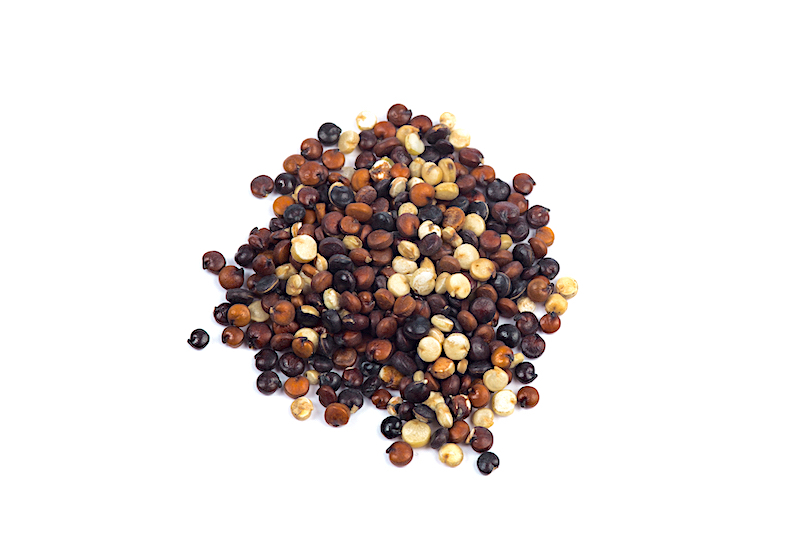
Tri-Color Blend Quinoa takes a little longer to cook, clocking in at 17 minutes. Tri-Color is a quinoa blend of Antique White, Red, and Black varieties. It’s more firm than our Antique White variety and is savory, slightly nutty, and earthy. The darker seeds in this multi-colored quinoa also have a bit more pop than the lighter seeds, which makes for a unique texture. Tri-Color Blend Quinoa is a bit more assertive in flavor than Antique White Quinoa and makes for a stand-out stand-in for meat in tacos or even sloppy joes.
Quinoa, it's what's for breakfast!
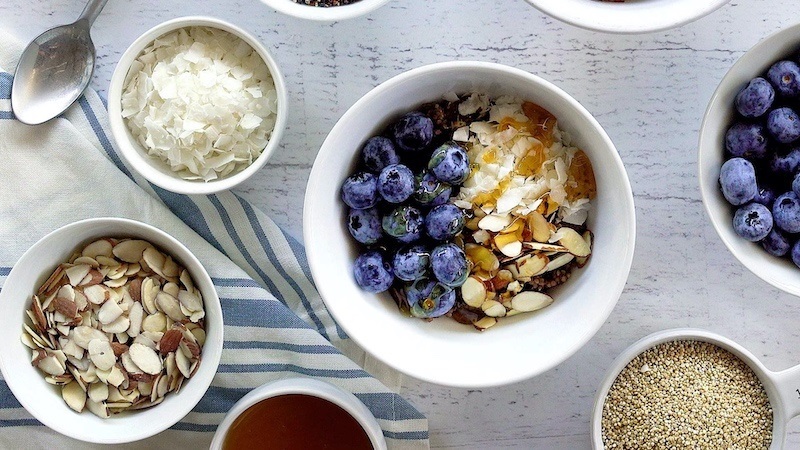
Personally, my favorite quinoa recipes are for breakfast. Our Antique White Quinoa pairs perfectly with fruit in this recipe for Black Cherry & Blueberry Quinoa Breakfast Bowls. Cooking Antique White Quinoa with fruit juice and water lends it a nice, fruity flavor.
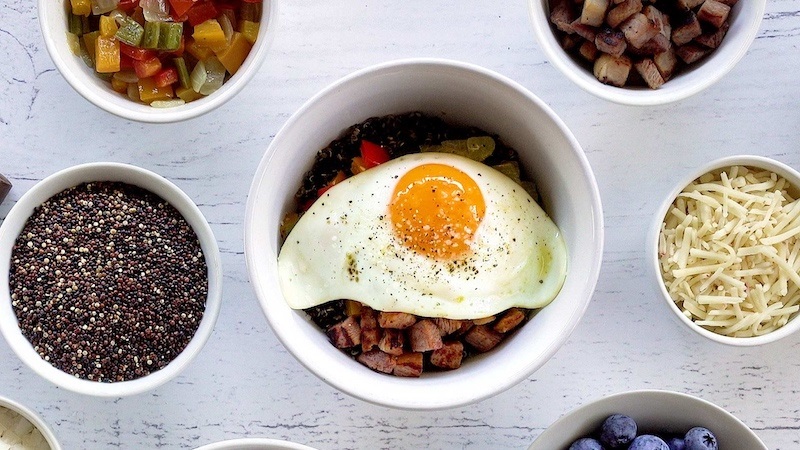
Another one of my favorite quinoa recipes, Denver Omelet Quinoa Breakfast Bowls, utilizes our Tri-Color Blend Quinoa and includes elements of a Denver omelet.
Exclusive Recipe for Quinoa Risotto
Craving something else? One of my favorite things about quinoa is its versatility. At Lundberg Family Farms, we’ve used it to make red rice and quinoa rice cakes. At home, you can use quinoa in tons of different recipes—from quinoa muffins to quinoa hummus
to quinoa risotto! Risotto usually calls for arborio rice, but here’s an exclusive recipe for easy (and cheesy!) Antique White Quinoa Risotto I developed just for this blog:
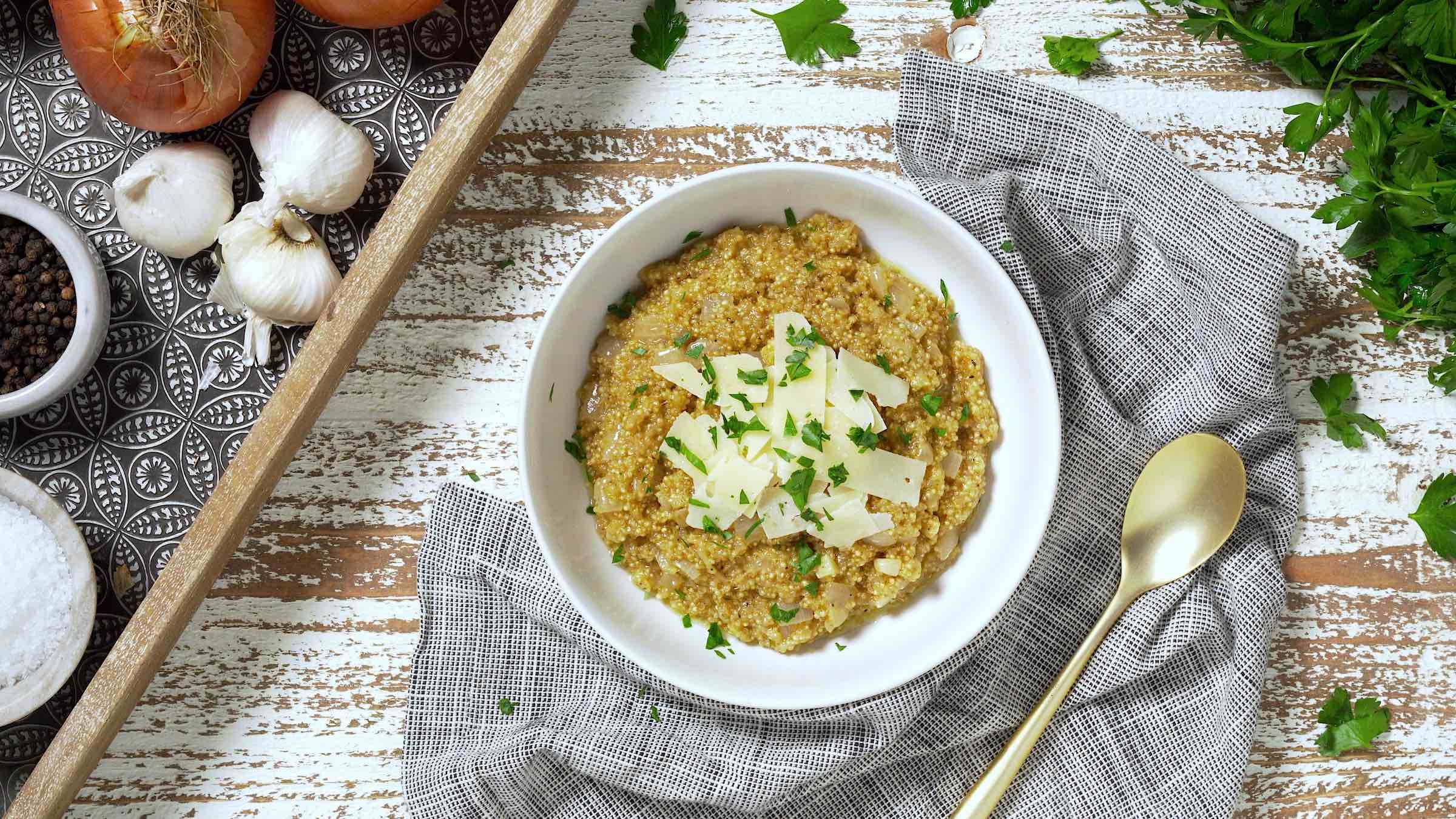

Meet and Greet and Eat at
Lundberg Social Media Links